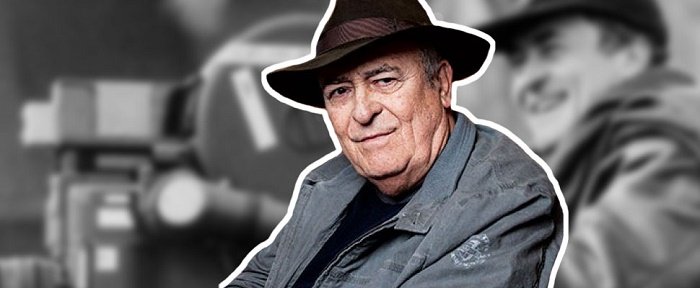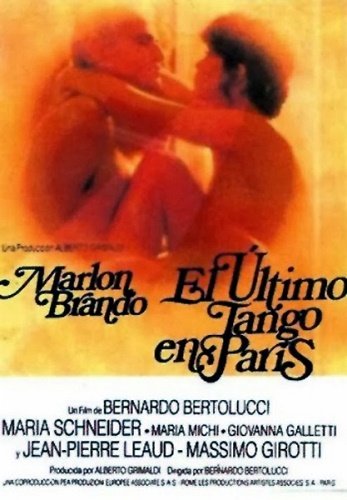Bernardo Bertolucci: una inconforme mirada cinematográfica | Bernardo Bertolucci: a nonconformist cinematographic gaze
Una de las figuras más importantes de la cinematografía italiana y de la contemporánea universal es Bernardo Bertolucci, fallecido el 26 de noviembre de 2018. Además de director, Bertolucci destacó como guionista, productor e, incluso, actor. Fue autor de una producción cinematográfica de diversa temática, pero siempre caracterizada por una mirada crítica, polémica, atrevida en algunos casos, de profundidad reflexiva y vital. En su memoria, esta semblanza de sus filmes que más aprecio.
============
One of the most important figures of Italian and contemporary universal cinematography is Bernardo Bertolucci, who died on November 26, 2018. In addition to being a director, Bertolucci stood out as a screenwriter, producer, scriptwriter and even actor. He was the author of a film production of diverse subject matter, but always characterized by a critical, polemic, daring in some cases, reflective and vital depth. In his memory, here is a summary of his most appreciated films.

Perteneciente a una familia de humanistas (padre poeta e historiador, madre maestra, hermano dramaturgo), y teniendo luego casi como tutor al cineasta Pier Paolo Pasolini, fue haciendo una obra orientada por esa disposición inconforme y de gran agudeza fílmica.
Su primer filme importante es El conformista, de 1970, basada en una novela de Alberto Moravia, ofrece una crítica a la actitud fascista, encarnada en un personaje homófobo y de tendencia criminal que se presenta ante la sociedad como un ciudadano respetable. Aquí ya Bertolucci introduce a actores de mucha talla como Jean-Luis Trintignant y Stefania Sandrelli y quien será su fotógrafo favorito, Vittorio Storaro.
============
Belonging to a family of humanists (father a poet and historian, mother a teacher, brother a playwright), and later having almost as a tutor the filmmaker Pier Paolo Pasolini, he gradually developed a work guided by this nonconformist disposition and great filmic acuity.
His first important film is The Conformist, from 1970, based on a novel by Alberto Moravia, offers a critique of the fascist attitude, embodied in a homophobic and criminally inclined character who presents himself to society as a respectable citizen. Here Bertolucci already introduces actors of great stature such as Jean-Luis Trintignant and Stefania Sandrelli and his favorite photographer, Vittorio Storaro.
Luego, hará su creación más controversial: El último tango en París, en 1972, en la que se nos narra la historia de un hombre maduro que establece una relación de amante con una joven actriz parisina, relación que está basada en una voluntad de dominio masculino, expresada como violencia sexual, pero también marcada por una fría desolación personal. Contó con las actuaciones protagónicas de Marlon Brando y Maria Schneider. Fue censurada en varios países, e inclusive le fue seguido un proceso judicial al cineasta. De nuevo la fotografía de Storaro, y la inclusión de la envolvente música hecha por Gato Barbieri.
============
Later, he will make his most controversial creation: The Last Tango in Paris, in 1972, which tells the story of a mature man who establishes a lover's relationship with a young Parisian actress, a relationship based on a desire for male domination, expressed as sexual violence, but also marked by a cold personal desolation. It starred Marlon Brando and Maria Schneider. It was censored in several countries, and the filmmaker was even prosecuted. Once again Storaro's photography, and the inclusion of the enveloping music by Gato Barbieri.

En 1976 Bertolucci hizo una de sus más famosas realizaciones: Novecento en italiano, es decir, 1900. Se trata, diría, de un gran mural vivo de la historia político-social de la Italia (podría decirse, de Europa) de la primera mitad del siglo XX, con sus acontecimientos y movimientos centrales: la dinámica de las clases sociales, el desarrollo industrial capitalista, las luchas campesinas y revolucionarias, el fascismo y el comunismo. Todo este “fresco”, de ribetes épicos, está jalonado por la visión crítica de Bertolucci –entre el drama realista y el toque poético, a veces cercano al gran director italiano Fellini–. En este filme logró conformar un reparto de primera: Robert De Niro, Gérard Depardieu, Donald Sutherland, Dominique Sanda, entre los principales; siguió con la maestría de Storaro, que alcanza aquí uno de los más altos niveles de su arte fotográfico, y la incorporación de la atractiva música del también maestro Ennio Morricone.
============
In 1976 Bertolucci made one of his most famous realizations: Novecento in Italian, that is, 1900. It is, I would say, a great living mural of the social-political history of Italy (one could say, of Europe) in the first half of the 20th century, with its central events and movements: the dynamics of social classes, capitalist industrial development, peasant and revolutionary struggles, fascism and communism. All this "fresco", with epic overtones, is punctuated by Bertolucci's critical vision -between realistic drama and poetic touch, sometimes close to the great Italian director Fellini-. In this film he managed to assemble a first-rate cast: Robert De Niro, Gérard Depardieu, Donald Sutherland, Dominique Sanda, among the main ones; followed by the mastery of Storaro, who reaches here one of the highest levels of his photographic art, and the incorporation of the attractive music of the also master Ennio Morricone.
La otra gran realización, también de talante épico, de Bertolucci es El último emperador, de 1987. Antes había hecho La luna (1979), interesante filme que aborda el polémico tema del incesto, y La tragedia de un hombre ridículo (1981). En El último emperador vuelve el cineasta italiano a su revisión histórica, esta vez del Asia central, particularmente China, por medio de la recreación biográfica del último emperador chino, Aisin-Gioro Puyi, que incluye toda la deriva vivida por este personaje histórico, desde su ascensión al trono y su corto reinado (1908-1912), el fin del gobierno imperial con la Revolución china, el encierro en la Ciudad Prohibida, su encarcelamiento, “reeducación” hasta la triste asimilación al poder. El filme está basado en la autobiografía de Puyi.
En el reparto sobresalen John Lone, Peter O’Toole y Joan Chen. Nuevamente la impactante fotografía de Storaro, y ahora la música del importante compositor Ryuichi Sakamoto. Obtuvo nueve premios Óscar, entre ellos el de mejor película y mejor director, y otros galardones en diferentes festivales.
============
Bertolucci's other great achievement, also of an epic nature, is The Last Emperor, from 1987. He had previously made The Moon (1979), an interesting film that deals with the controversial subject of incest, and The Tragedy of a Ridiculous Man (1981). In this film the Italian filmmaker returns to his historical review, this time of Central Asia, particularly China, through the biographical recreation of the last Chinese emperor, Aisin-Gioro Puyi, which includes all the drift lived by this historical character, from his ascension to the throne and his short reign (1908-1912), the end of the imperial government with the Chinese Revolution, the confinement in the Forbidden City, his imprisonment, "re-education" until the sad assimilation to power. The film is based on Puyi's autobiography.
The cast includes John Lone, Peter O'Toole and Joan Chen. Again, Storaro's stunning cinematography, and now the music by the important composer Ryuichi Sakamoto. It won nine Oscars, including Best Picture and Best Director, and other awards at different festivals.
Otro de sus filmes que me interesa relevar por su belleza y significación es El cielo protector (titulada también como Refugio de amor), de 1990. Está basado en la conmovedora novela homónima (1949) de Paul Bowles, la que propicia el carácter de drama existencial al filme, rasgos que Bertolucci ya había trabajado, solo que en este el énfasis está puesto en el fracaso amoroso de un matrimonio que viaja al África sahariana para intentar reencontrarse, propósito fallido que concluye en la muerte y la soledad. Este filme está interpretado magistralmente por John Malkovich y Debra Winger, y cuenta con la cautivante fotografía de Storaro y la penetrante composición musical de Sakamoto.
============
Another of his films that I am interested in highlighting for its beauty and significance is The Sheltering Sky (also titled Refuge from Love), from 1990. It is based on the moving novel of the same name (1949) by Paul Bowles, which gives the film the character of existential drama, features that Bertolucci had already worked on, only that in this one the emphasis is placed on the love failure of a married couple who travel to Saharan Africa to try to find each other again, a failed purpose that ends in death and loneliness. This film is masterfully acted by John Malkovich and Debra Winger, and features Storaro's captivating cinematography and Sakamoto's penetrating musical composition.
Posteriormente, Bertolucci realizó El pequeño Buda (1993), Belleza robada (1996), Soñadores (2003) y Tú y yo (2012).
Presidió el jurado del Festival de Cannes en 1990. En 2007 le fue conferido el León de Oro Honorífico por su trayectoria cinematográfica, en 2011 la Palma de Oro de honor en Cannes y en el 2012 el Premio del Cine Europeo por toda su obra.
Recomiendo, sin ninguna duda, revisitar a Bertolucci, si ya lo conoces, o acercarse a su obra, capital en la reciente historia del cine mundial.
============
Subsequently, Bertolucci made The Little Buddha (1993), Stolen Beauty (1996), Dreamers (2003) and You and I (2012).
He chaired the jury of the Cannes Film Festival in 1990. In 2007 he was awarded the Honorary Golden Lion for his film career, in 2011 the Palme d'Honneur at Cannes and in 2012 the European Film Award for his entire oeuvre.
I recommend, without any doubt, to revisit Bertolucci, if you already know him, or to approach his work, capital in the recent history of world cinema.
Referencias | References:
https://es.wikipedia.org/wiki/Bernardo_Bertolucci
https://en.wikipedia.org/wiki/Bernardo_Bertolucci

Gracias por su lectura | Thank you for reading.




Saludos maestro @josemalavem, fabuloso post referido a Bernardo Bertolucci. Hermosa la obra de este intelectual de la humanidad y su gran herencia para el cine mundial.
Gracias, amigo @hiramdo. ¿Llegó a ver en su tiempo El último tango en París?
Agradecido, amigos de @rutablockchain.
¡Felicitaciones!
1. Invierte en el PROYECTO ENTROPÍA y recibe ganancias semanalmente. Entra aquí para más información.
3. Suscríbete a nuestra COMUNIDAD, apoya al trail de @Entropia y así podrás ganar recompensas de curación de forma automática. Entra aquí para más información sobre nuestro trail.
4. Creación de cuentas nuevas de Hive aquí.
5. Visita nuestro canal de Youtube.
Atentamente
El equipo de curación del PROYECTO ENTROPÍA
Gracias por su apoyo, amigos de @entropia.
Damn, I gotta watch some of this guys movies
Posted using CineTV